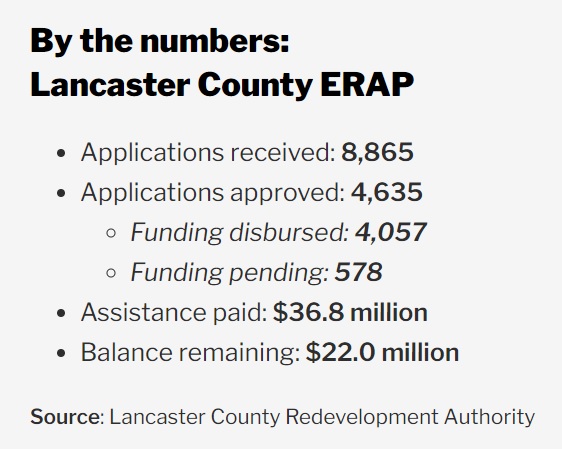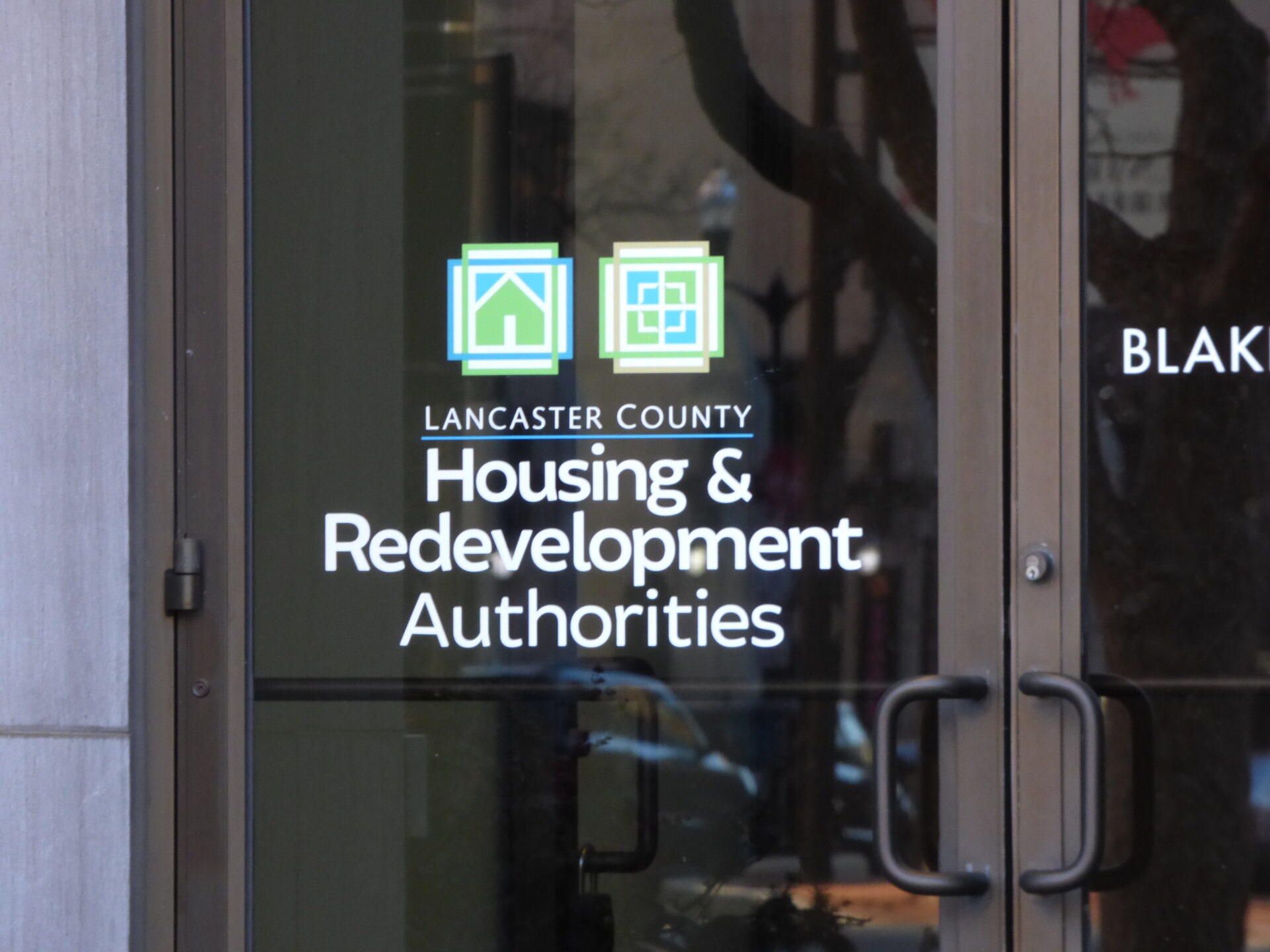The program that pays rent for Lancaster County households who are impacted by the pandemic will remain closed to new applications through at least Sept. 30.
The moratorium on applications to the Emergency Rental Assistance Program began in mid-July. As hoped, it has freed up the time needed for staff to work through a sizable backlog, Lancaster County Redevelopment Authority Executive Director Justin Eby said in in an update to the county commissioners this week.
That includes not only applications but also payments for nearly 600 households who have been approved but whose payments have not yet been processed and remitted, he said.
How the catch-up work goes, and how much funding ends up being committed, will help to determine whether ERAP should re-open. At this point, it’s not clear what decision will be made, he said.
One factor that is playing into the authority’s strategizing: Updated federal guidance now allows localities to redirect a portion of their unused ERAP funds, spending it on initiatives such as new affordable housing construction rather than rental assistance. Eby said the authority would tentatively be looking at repurposing about $3 million.

About ERAP
ERAP is a massive, nationwide, federally funded program that pays rent for households whose finances were disrupted by the Covid-19 pandemic.
In Lancaster County, the program launched in spring 2021 and is overseen by the redevelopment authority. Tenfold and other nonprofits are collaborating, primarily assisting with in-person client enrollment. (Until mid-April, clients could also choose to apply on their own via an online portal, but it was shut down as an anti-fraud precaution.)

In all, the authority received $58.8 million in ERAP funds to distribute. It has expended about $36.8 million to date, leaving $22 million available.
Some $3.1 million was disbursed in June, which suggests that $22 million might last about seven more months. However, Eby cautioned against making any kind of straight-line projection.
In general, earlier applicants have had more back rent than later ones, necessitating bigger payments. That said, every household is different, and there may still be some that are eligible for large amounts of assistance. Until the authority reviews all the applications, it won’t know for sure.
“It’s tough to really gauge at this point,” Eby said.
Complicating the authority’s task has been Lancaster County’s extremely tight rental market, which has pushed up rents and made it difficult for many individuals and families to find housing. ERAP has paid for hotel stays for numerous households, including some of the people who were staying at the Motel 6 on Lincoln Highway East when it flooded last month.
Staffing shortages were one of the reasons the authority gave for falling behind on ERAP. That has been addressed, and all relevant staff positions are now filled, Eby said.
By the numbers
In all, Lancaster County’s ERAP program has received just over 8,800 applications. Nearly 3,600, or 40%, are incomplete.
A large ratio of incomplete applications has been the norm since the program’s debut. Eby noted that until mid-April, when the online portal was closed, there was no pre-screening of applicants.
Many may have started the process before realizing they were ineligible or that they lacked the required documentation. Some may have moved outside Lancaster County. There’s no way for the authority or its partners to know the reasons behind the incomplete applications, Eby said.
Several hundred applicants were ruled ineligible: Without pre-screening, their eligibility could not be determined until after their paperwork was received and reviewed.
Since March, Tenfold has been systematically reaching out to applicants with incomplete documentation. Based on the responses it has been getting, it estimates 952 more households will be able to complete the process and secure approvals.
What happens when ERAP winds down?
Brian Fulmer, president of Crossroads Property Management, said he sees many households becoming “100% dependent” on ERAP, and worries about their capacity to pay their own way when it ends.
For landlords, the program has been frustrating, he said. Typically, households are approved for an initial period of support, such as three months, but must then reapply.
Often, he said, they forget to do so until they receive a notice that their rent is past due. At that point, they reapply and get approved for another period, but the delays in the process add up.
“It’s a vicious cycle,” he said.
In the weeks before applications were paused, the authority and its partners were seeing fewer and fewer would-be applicants who met eligibility guidelines, said Howard Garver, the authority’s manager of tenant and landlord programs. The majority were viewing it as a general-purpose rental assistance program, rather than one tied to the pandemic.
“We had very clear guidelines,” he said, so those households were screened out and did not apply.
“Our difficulty is really knowing how to direct them elsewhere,” he said.






